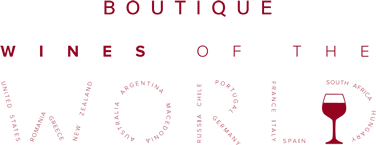| Month | Savings |
|---|---|
| Sum | $180 |
| January | $100 |
| February | $80 |
Table
The Champagne winemaking community, under the auspices of the Comité Interprofessionnel du vin de Champagne (CIVC), has developed a comprehensive set of rules and regulations for all wine produced in the region to protect its economic interests. They include codification of the most suitable growing places; the most suitable grape types (most Champagne is a blend of up to three grape varieties, though other varieties are allowed); and a lengthy set of requirements specifying most aspects of viticulture. This includes pruning, vineyard yield, the degree of pressing, and the time that wine must remain on its lees before bottling. It can also limit the release of Champagne to market to maintain prices. Only when a wine meets these requirements may it be labelled Champagne. The rules agreed upon by the CIVC are submitted for the final approval of the Institut national de l’origine et de la qualité (formerly the Institut National des Appellations d’Origine)
| STANDART | PREMIUM |
|---|---|
| 29 | 59 |
| 1 Website | UNLIMITED Websites |
| UNLIMITED Bandwidth | UNLIMITED Bandwidth |
| 100 GB Disk Space | UNLIMITED Disk Space |
| 10 MySQL Databases (Linux OS) 1 MS SQL Database (Windows OS) |
UNLIMITED Databases |
| 100 Email Addresses | 1000 Email Addresses |
In 2007 the INAO, the government organization that controls wine appellations in France, was preparing to make the largest revision of the region’s legal boundaries since 1927, in response to economic pressures. With soaring demand and limited production of grapes, Champagne houses say the rising price could produce a consumer backlash that would harm the industry for years into the future. That, along with political pressure from villages that want to be included in the expanded boundaries, led to the move. Changes are subject to significant scientific review and are said to not impact Champagne produced grapes until 2020.
| Month | Savings |
|---|---|
| Sum | $180 |
| January | $100 |
| February | $80 |
Sparkling wines are produced worldwide, but most legal structures reserve the word Champagne exclusively for sparkling wines from the Champagne region, made in accordance with Comité Interprofessionnel du vin de Champagne regulations. In the European Union and many other countries the name Champagne is legally protected by the Madrid system under an 1891 treaty, which reserved it for the sparkling wine produced in the eponymous region and adhering to the standards defined for it as an appellation d’origine contrôlée; the protection was reaffirmed in the Treaty of Versailles after World War I. Similar legal protection has been adopted by over 70 countries. Most recently Canada, Australia, Chile, Brazil, and China passed laws or signed agreements with Europe that limit the use of the term “Champagne” to only those products produced in the Champagne region. The United States bans the use from all new U.S.-produced wines. Only those that had approval to use the term on labels before 2006 may continue to use it and only when it is accompanied by the wine’s actual origin (e.g., “California”). The majority of US-produced sparkling wines do not use the term Champagne on their labels, and some states, such as Oregon, ban producers in their states from using the term.
